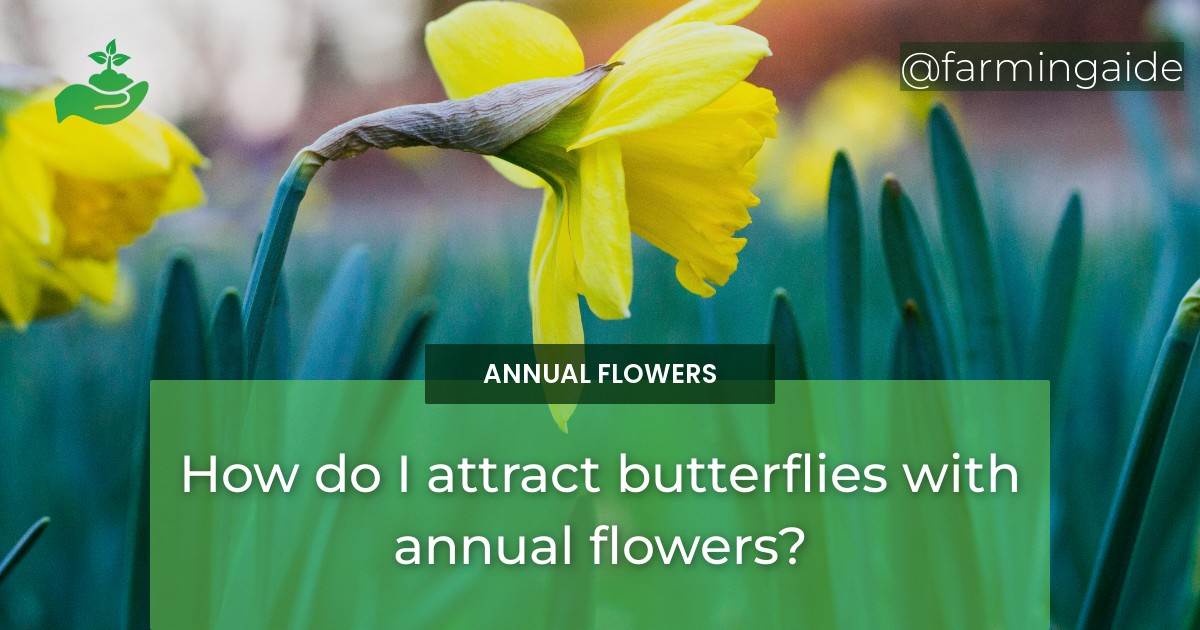Yes, you can grow annual flowers indoors. Growing annual flowers indoors is an excellent way to bring life and color into your home. There are many varieties of annual flowers that are well-suited for indoor gardening. These flowers are relatively easy to grow and maintain.
Are Annual Flowers Suitable for Growing Indoors as Well as in a Vertical Living Wall?
Yes, annual flowers like petunias, marigolds, and impatiens are suitable for growing indoors as well as in a vertical living wall. Vertical gardening offers a creative way of growing annual flowers vertically, making them an attractive option for small spaces and urban environments.
Tips for Growing Annual Flowers Indoors
Introduction
Annual flowers are popular due to their vibrant colors and the ease of growing them. Growing annual flowers indoors has many advantages, including:
- Bringing color and life into your home
- Providing fresh flowers for indoor decoration
- Protecting delicate flowers from pests and harsh weather conditions
Suitable Varieties of Annual Flowers for Indoor Gardening
Choosing the Right Annual Flowers
When choosing annual flowers for indoor gardening, it’s essential to select varieties that are well-suited for indoor conditions. These flowers should have a compact growth habit, adapt well to low light levels, and produce colorful blooms for an extended period. Here are some suitable varieties for indoor gardening:
Petunias
Petunias are fragrant, colorful, and easy to grow. They prefer bright light but can tolerate low light conditions. Petunias thrive in well-draining soil and require regular watering.
Begonias
Begonias are known for their beautiful flowers and attractive foliage. They prefer low to medium light levels and require well-draining soil. Begonias should be watered regularly but avoid overwatering, which can lead to root rot.
Geraniums
Geraniums are a popular choice for indoor gardening. They prefer bright, indirect light and well-draining soil. Geraniums should be watered regularly and benefit from a balanced fertilizer every two to four weeks.
Impatiens
Impatiens are easy to grow and produce colorful flowers in a variety of shades. They prefer low to medium light levels and well-draining soil. Impatiens should be watered regularly and benefit from a balanced fertilizer every two to four weeks.
Pansies
Pansies are a cool-season flower that produces colorful blooms in a variety of shades. They prefer bright light and well-draining soil. Pansies should be watered regularly and benefit from a balanced fertilizer every two to four weeks.
Marigolds
Marigolds are easy to grow and produce yellow and orange flowers. They prefer bright light and well-draining soil. Marigolds should be watered regularly and benefit from a balanced fertilizer every two to four weeks.
Zinnias
Zinnias are easy to grow and produce colorful flowers in a variety of shades. They prefer bright light and well-draining soil. Zinnias should be watered regularly and benefit from a balanced fertilizer every two to four weeks.
Lighting Requirements for Indoor Annual Flowers
Importance of Lighting for Indoor Annual Flowers
Lighting is one of the most critical factors in successfully growing annual flowers indoors. Without adequate light, plants will become leggy, weak, and produce fewer blooms. Here are some things to keep in mind when providing lighting for indoor annual flowers:
Natural Lighting
Most annual flowers require at least six hours of direct sunlight each day. However, some flowers, such as impatiens and begonias, prefer low to medium light levels. Placing plants near a south-facing window is ideal for providing natural light. East and west-facing windows also provide adequate light levels.
Artificial Lighting
If natural light is not available, you can supplement it with artificial lighting. LED grow lights are an excellent option for indoor gardening. These lights provide full-spectrum light that mimics natural sunlight and is energy-efficient.
Duration of Lighting
Most annual flowers require 12-16 hours of light per day. However, this can vary by plant type. Be sure to research your specific plant’s lighting requirements to ensure you are providing adequate light.
Indoor Gardening Techniques for Annual Flowers
Container Selection and Preparation
Choosing the right container is essential for successful indoor gardening. Containers should be the appropriate size for the plant and have drainage holes to prevent waterlogging. Before planting, containers should be cleaned and sterilized to prevent disease.
Proper Soil Mix
Annual flowers require well-draining soil that is rich in organic matter. A good soil mix for indoor gardening contains equal parts of peat moss, perlite, and vermiculite. Avoid using garden soil, which can harbor pests and diseases.
Watering and Fertilizing
Annual flowers should be watered regularly, but avoid overwatering, which can lead to root rot. Use a balanced fertilizer every two to four weeks to promote healthy growth and blooming.
Pruning and Deadheading
Pruning and deadheading are essential to keep indoor annual flowers healthy and blooming. Remove dead flowers and leaves to prevent disease and encourage new growth. Pruning can also help control the plant’s size and shape.
Pest and Disease Control
Indoor annual flowers are susceptible to pests and diseases. Common pests include spider mites, aphids, and mealybugs. Regularly inspect plants for signs of infestation and treat promptly. Also, avoid overwatering, which can lead to root rot and other diseases.
Conclusion
Growing annual flowers indoors is a great way to bring beauty and life into your home. By selecting the right varieties, providing adequate lighting, and using proper gardening techniques, you can enjoy colorful blooms year-round. Indoor gardening is a fun and rewarding hobby that anyone can enjoy.


